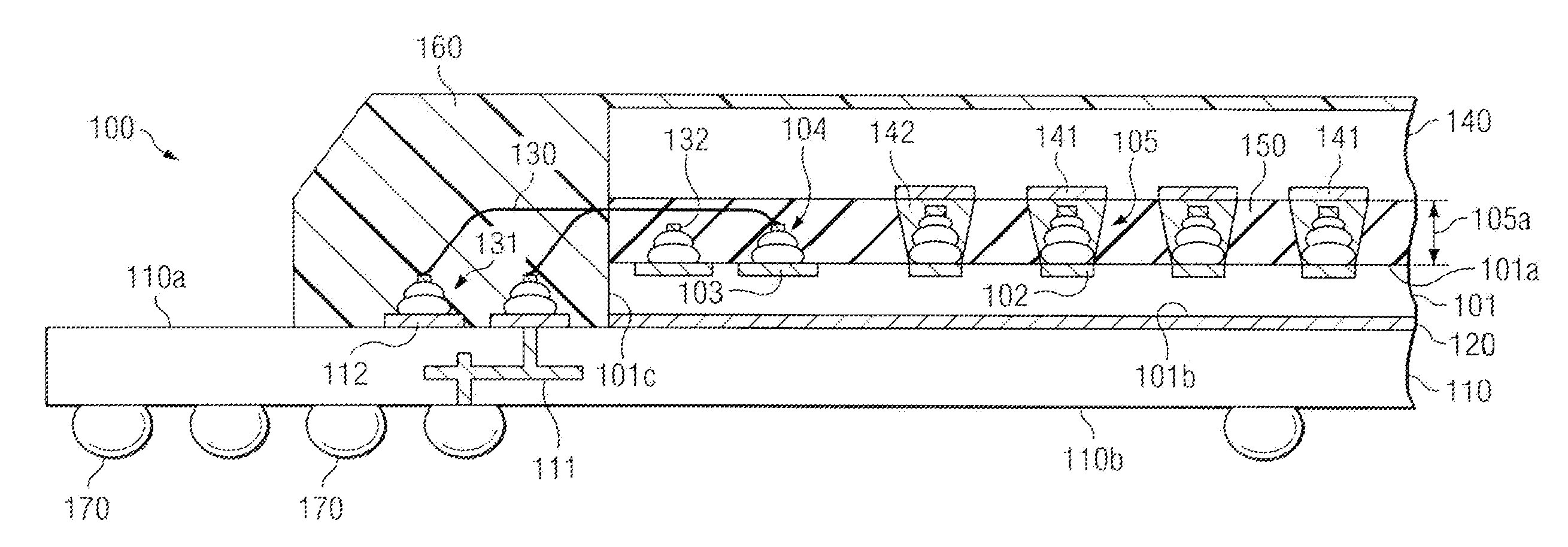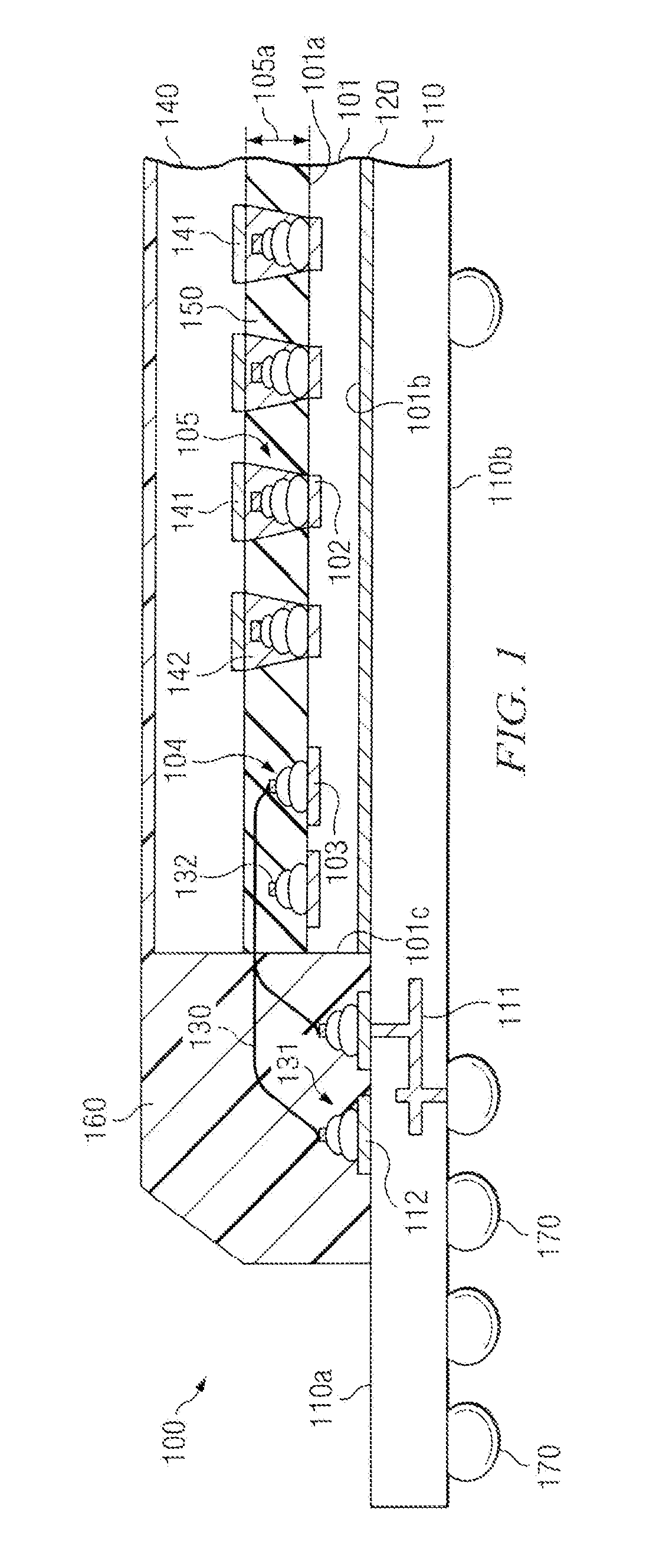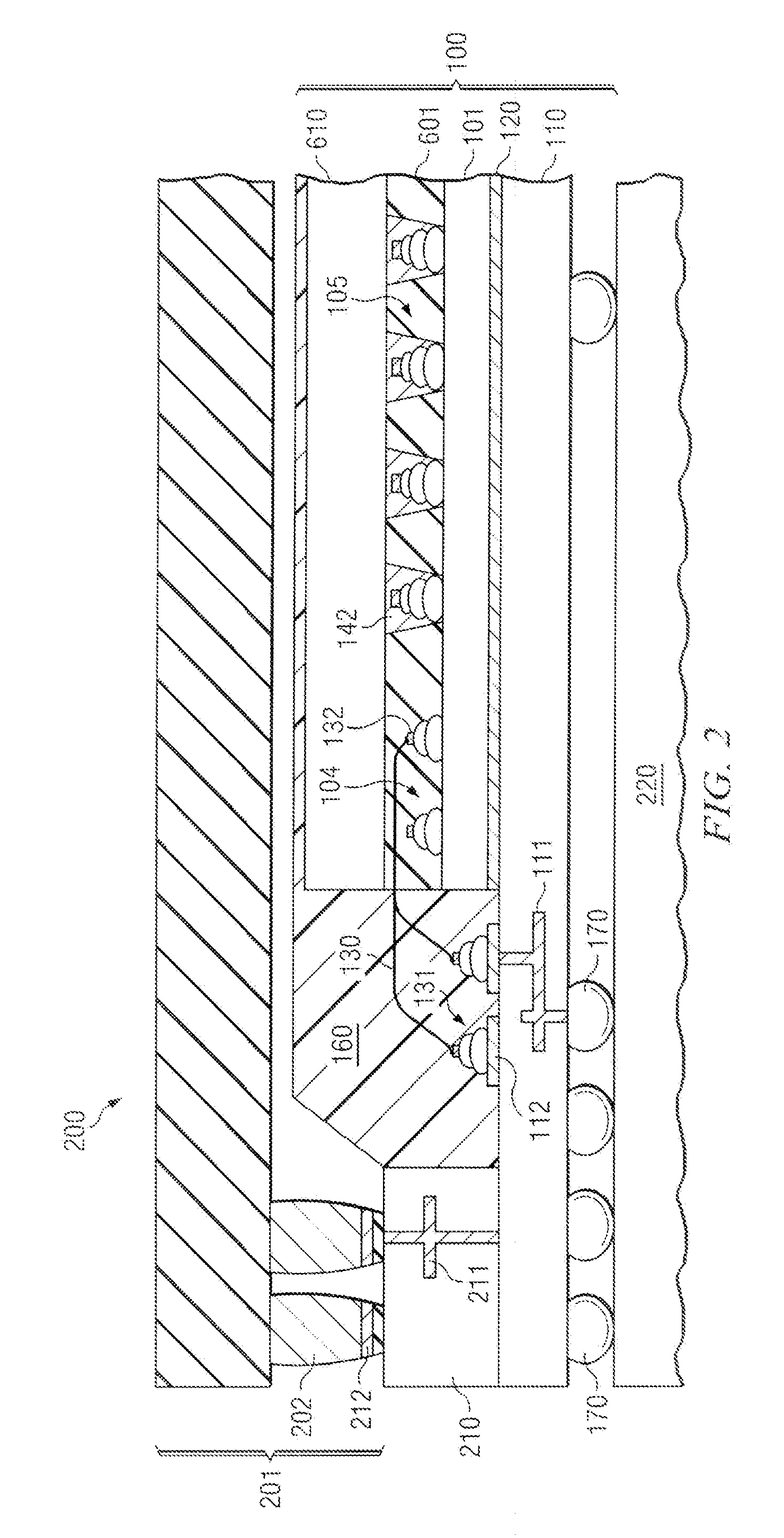Controlling Flip-Chip Techniques for Concurrent Ball Bonds in Semiconductor Devices
a technology of semiconductor devices and flip-chips, applied in semiconductor devices, semiconductor/solid-state device details, electrical apparatus, etc., can solve the problems of increasing the complexity of the product, the cost per functional unit should drop, and the increase of the functional complexity paralleled by the equivalent increase in the reliability of the product, so as to achieve excellent electrical performance, mechanical stability, and high product reliability.
- Summary
- Abstract
- Description
- Claims
- Application Information
AI Technical Summary
Benefits of technology
Problems solved by technology
Method used
Image
Examples
Embodiment Construction
[0022]FIG. 1 illustrates a portion of an assembled semiconductor device, generally designated 100, which includes semiconductor chips stacked on a substrate by the invented combination of assembly techniques. The first semiconductor chip is designated 101; it has an active surface 101a, which includes the devices and circuits, a passive surface 101b, and a perimeter 101c. First chip 101 has a certain size, but FIG. 1 shows only the chip portion in the neighborhood of the chip perimeter. The active surface of first chip 101 has a first set of contact pads 102 located in the interior portion of the chip, and a second set of contact pads 103 located in the peripheral portion of the chip.
[0023]As depicted in FIG. 1, the contact pads 103 of the second set have a deformed sphere 104 of non-reflow metal placed on the contact pads. The contact pads 102 of the first set have more than one deformed sphere placed on the contact pad so that the spheres form column-shaped spacers 105 with a cert...
PUM
 Login to View More
Login to View More Abstract
Description
Claims
Application Information
 Login to View More
Login to View More - R&D
- Intellectual Property
- Life Sciences
- Materials
- Tech Scout
- Unparalleled Data Quality
- Higher Quality Content
- 60% Fewer Hallucinations
Browse by: Latest US Patents, China's latest patents, Technical Efficacy Thesaurus, Application Domain, Technology Topic, Popular Technical Reports.
© 2025 PatSnap. All rights reserved.Legal|Privacy policy|Modern Slavery Act Transparency Statement|Sitemap|About US| Contact US: help@patsnap.com



